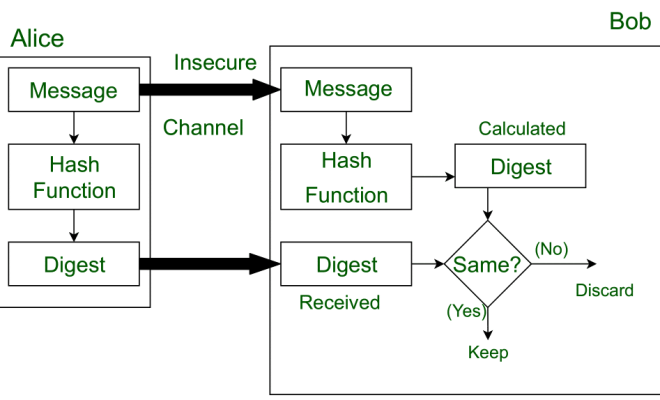What Is a Message Digest?

A message digest is a mathematical algorithm that takes a message of any length as input and produces a fixed-size output, known as a digest or hash. This digest is a unique digital fingerprint of the original message and is used to verify the integrity of messages and prevent tampering.
Message digests are commonly used in cryptographic applications such as digital signatures, password storage, and data verification. They ensure that the data being checked has not been modified or corrupted in any way.
The most commonly used message digest algorithms are MD5, SHA-1, and SHA-256. MD5 produces a 128-bit digest, SHA-1 produces a 160-bit digest, and SHA-256 produces a 256-bit digest.
To calculate a message digest, the message is first broken down into blocks and processed by the algorithm. Each block undergoes a series of mathematical operations that transform the message into a fixed-size digest.
The resulting digest is a unique representation of the original message, meaning that any change to the message will result in a different digest. Therefore, when the message is received, the recipient can calculate the digest and compare it to the original digest to ensure that the message has not been altered.
Message digests are also used in password storage. Rather than storing passwords in plaintext, which can be easily accessed by hackers, the password is hashed using a message digest algorithm and stored as the digest. When a user enters their password, the system calculates the digest and compares it to the stored digest to authenticate the user.
In summary, a message digest is a crucial tool used to ensure data integrity and prevent tampering. They are used in cryptographic applications such as digital signatures, password storage, and data verification. By calculating a unique digital fingerprint of the original message, message digests ensure that any changes to the message can be detected.





